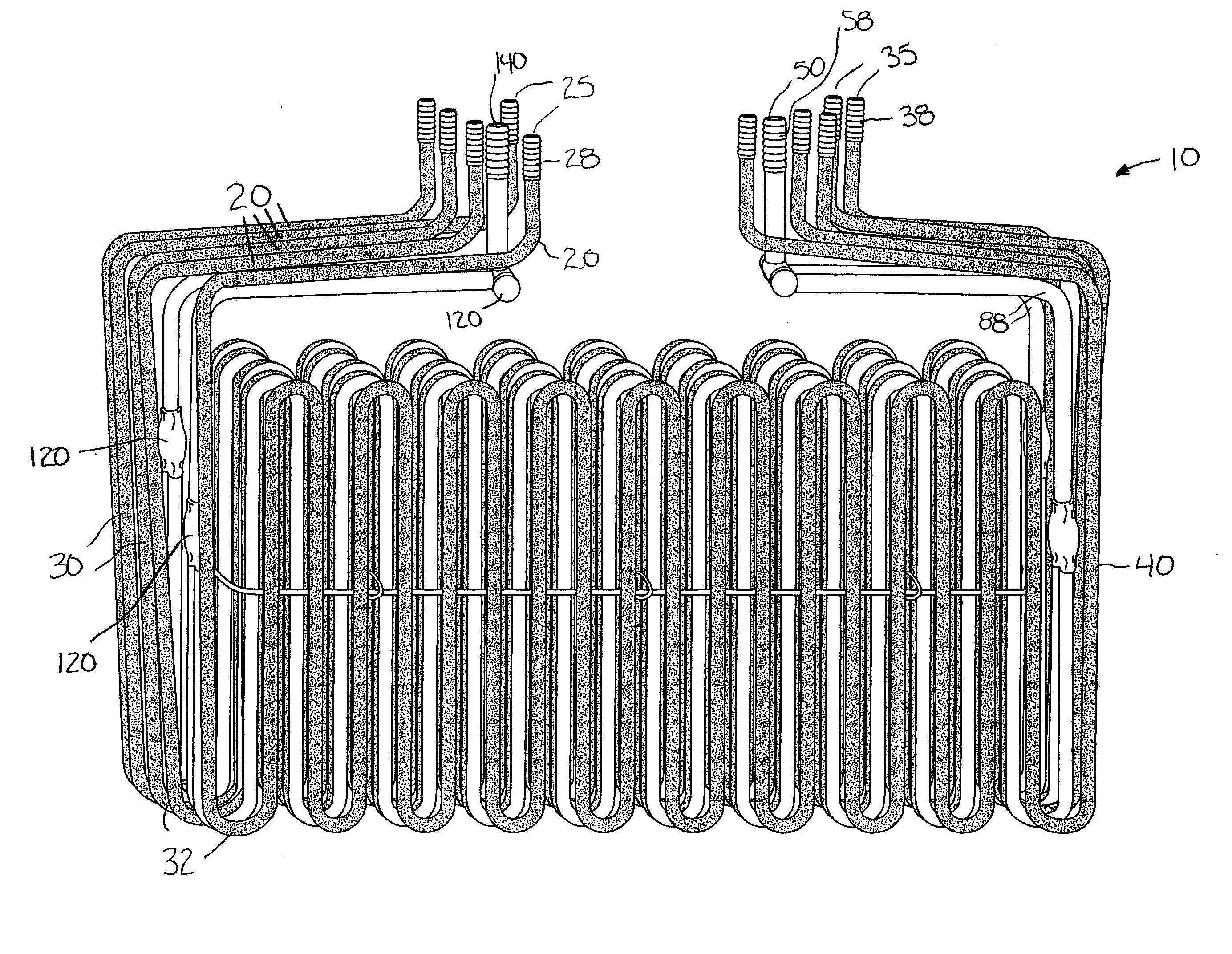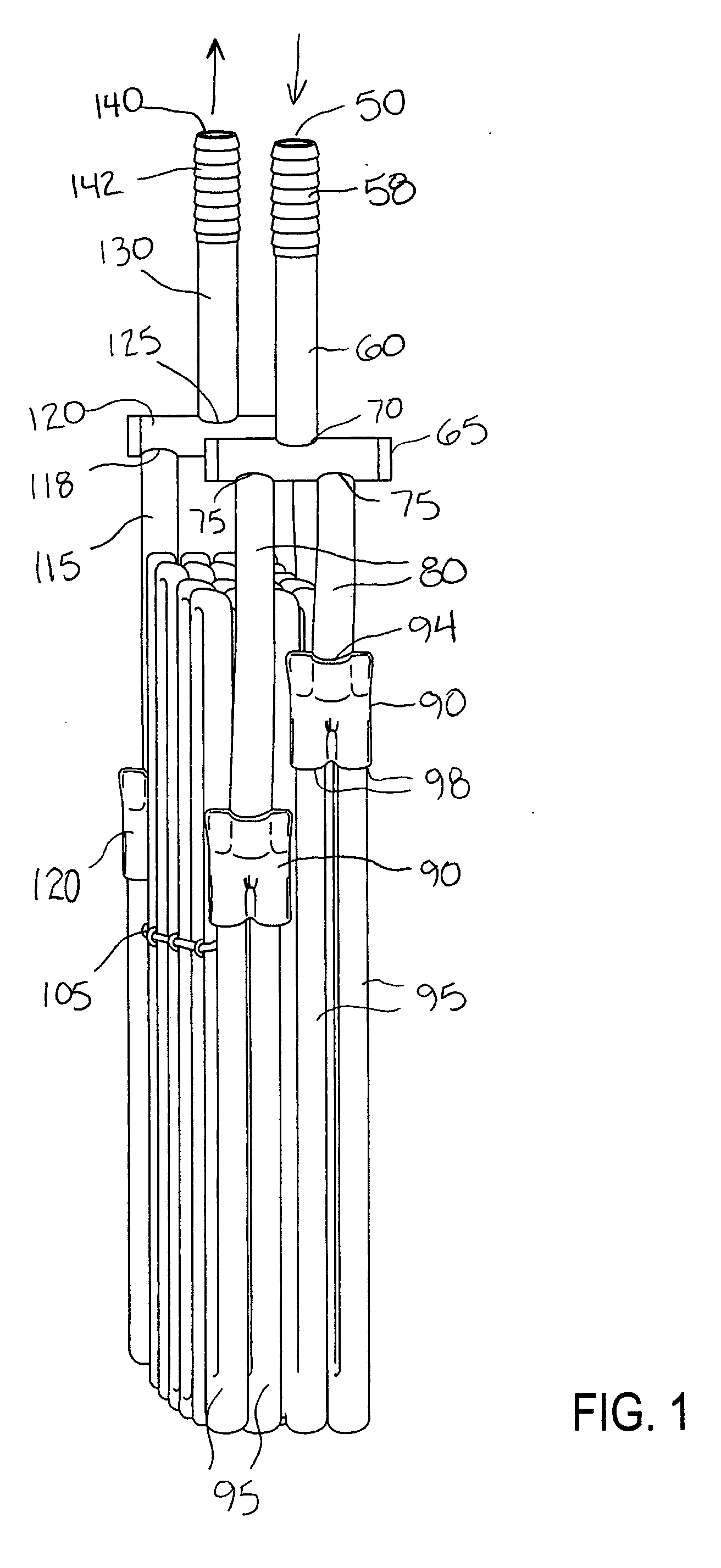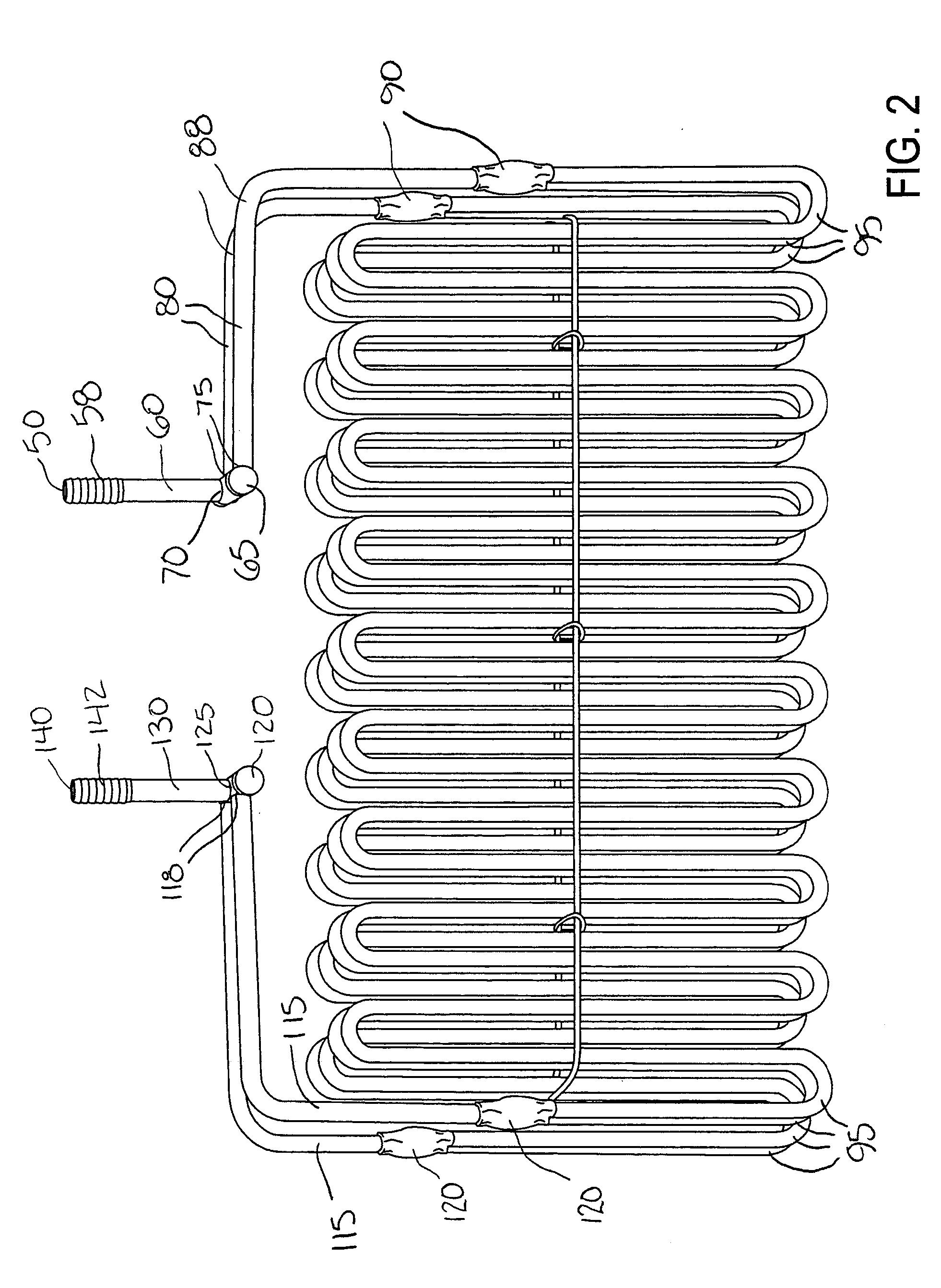Cold plate for beer dispensing tower
a technology of beer dispensing tower and cold plate, which is applied in the direction of domestic cooling apparatus, lighting and heating apparatus, liquid transfer devices, etc., can solve the problems of inability to serve patrons, affecting the service life of patrons, and the gas gradually becoming increasingly unstable, so as to achieve more consistent and efficient beer chilling apparatus
- Summary
- Abstract
- Description
- Claims
- Application Information
AI Technical Summary
Benefits of technology
Problems solved by technology
Method used
Image
Examples
Embodiment Construction
[0017] A rectangular cold plate is formed when molten aluminum is cast formed over a coil basket of beverage conducting lines and coolant conducting lines arranged in a heat exchanging relationship. The embodiments described herein shall refer to the beverage being chilled as beer and the coolant as glycol. However, those skilled in the art will understand that other beverages and coolants can be used. Elongate tubular members formed of stainless steel are formed with inlet and outlet portions, and a serpentine intermediate portion constructed and arranged for intimate heat exchange between fluids flowing through the tubular members of different temperatures. The coil basket comprises both beer conducting lines and glycol conducting lines arranged in a compact, tightly held formation typically secured with metal tie bars, such as heavy wire or the like. The coil basket is placed in a rectangular mold, with the inlets and outlets of the various lines disposed outside the mold. Molten...
PUM
 Login to View More
Login to View More Abstract
Description
Claims
Application Information
 Login to View More
Login to View More - R&D
- Intellectual Property
- Life Sciences
- Materials
- Tech Scout
- Unparalleled Data Quality
- Higher Quality Content
- 60% Fewer Hallucinations
Browse by: Latest US Patents, China's latest patents, Technical Efficacy Thesaurus, Application Domain, Technology Topic, Popular Technical Reports.
© 2025 PatSnap. All rights reserved.Legal|Privacy policy|Modern Slavery Act Transparency Statement|Sitemap|About US| Contact US: help@patsnap.com



